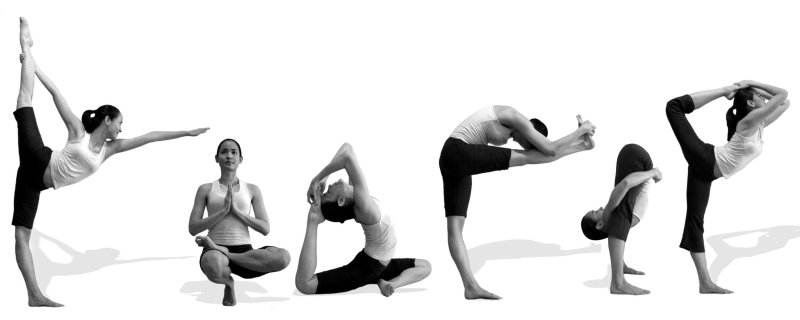Before Entering into the Different Techniques to follow, I will discuss some of the basics here, From next page you can get the different postures. Even though these explanation feels like philosophy, it is better to read once before going for the practice.
What is Yoasanas ?
That which gives stability to the body and mind is called as asana. Yogasana should aim at giving flexibility to the body. There are many types of asnanas and they can be further divided in various types. However they can be divided in two main types, i.e. meditative and physical. Those which involve mental activity are meditative, such as Padmasana, Siddhasana and Sukhasana.
The aim is to keep both mind and body in perfect health through exercise of the body and the mind. The special feature of asana is that what they do for body, they do for mind in a much more effective way. They are not only body building exercises, more than that they increase the mental powers, and we can control our senses as well as our breathing which is capable of lengthening life span.
Those who want to keep their body healthy should invariably practice Yogasanas daily, so that the elasticity of limbs is maintained and the mental faculties do not disintegrate. If we exercise regularly we can get rid of this impurity, thereby enhancing our physical and mental health, which will in turn increase our life span. Yogasanas keep the body free from these impurities and make it healthy. They also improve the functioning of our intestines so that the stomach ailments like indigestion, gas, constipation etc. are cured. The regular practice of Yogasanas imparts strength to the body, brightness to the face, high spirits to the mind and impetus to intellect. Yogic practices help control over the senses, thereby creating favourable situation for all.
A person who wishes to practice Hathayoga should avoid over-eating, over-exertion, too much talking, excess public contract, and too much stress on mind. then if one practices
Yoga postures, Pranayama and yogic purification practices, along with yama and niyama, one will obtain all the benefits of Yoga like slimness of body, luster of the face, clearness of voice, brightness of the eyes, freedom from disease, control over sexual energy, good digestive power, and purification of all the nadis or nerves.
Yogasanas increase the elasticity of our body and make the body more active and supple. The blood circulation takes place more smoothly and properly and the body becomes capable of more work, other types of exercises make muscles stiff and hard.
Other exercises cause tiredness to the body, while Yogasanas makes the individual fresh. These exercises do not cause any harm to the body, so they are known as non-violent exercises. Mind becomes balanced and peaceful. Besides having physical, mental and moral effects, Yoga systems lead a man to spiritualism.
The most important point to be remembered about Yoga exercises is that they are not the conventional laborious type of physical exercises, where you are supposed to sweat yourself out.
It is a very special kind of exercise, where your body is exercised, but you never feel exerted any time, because you are supposed to do all the postures within your comfortable limits.






